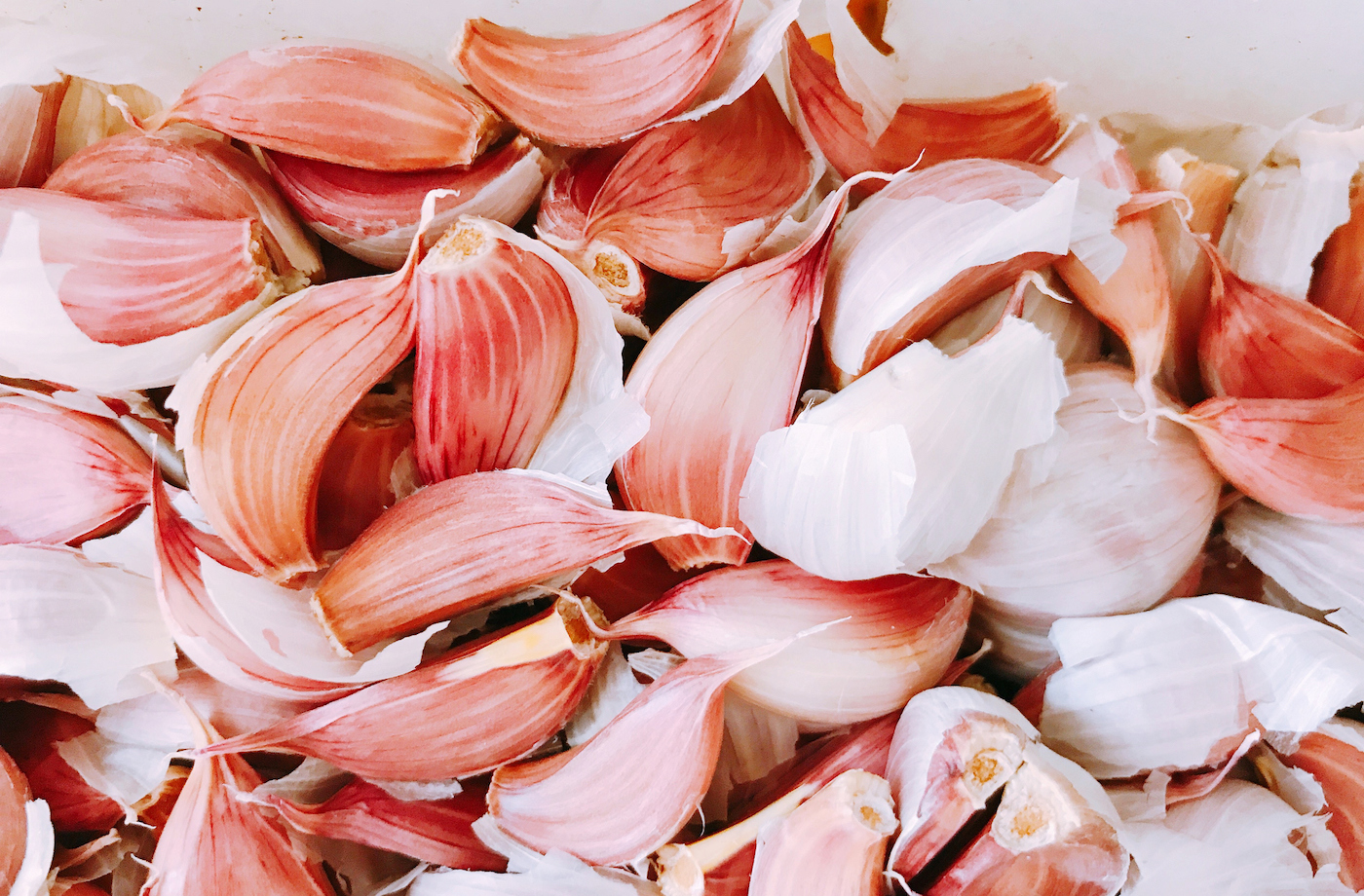Food waste is a massive, systemic issue, and requires largely systemic changes to fix. But there are also things everyday people can do to chip in and make their own food consumption habits more sustainable. One of those tricks: learning to use up every edible part of the produce you eat so that you throw out less. This often entails doing things like composting, growing new plants from food scraps, and learning how to cook with all the edible parts of your produce. No, I’m not just talking about making pesto out of carrot tops. You can go the extra mile to make like chef and wellness advocate Sophia Roe‘s case and cook up some garlic skin chips.
That’s right, garlic skin—yes, the stuff you usually peel off before slicing and dicing the allium—is completely edible. In fact, garlic skins are antioxidant and vitamin-rich, so your overall well-being benefits from not tossing them. But since garlic skins are naturally tough and fibrous, it helps to bake them or cook them down for a more enjoyable eating experience.
Here’s everything to know about the health benefits of garlic:
Enter Roe’s garlic skin chips, which she demoed how to make on a recent Instagram Live session. She uses garlic, but notes that you can use onion or shallot skins as well for a similar effect. However, don’t use the very outer layers of your allium (the very outer papery part). Instead, she sticks with the peel layer that directly touches the garlic/onion/shallot. “Anything with dirt or mold should not be eaten,” Roe says.
Once you’ve sorted the appropriate peels, simply toss them in olive oil, salt, and pepper and roast them at 425 degrees Fahrenheit for about 10 minutes. You’ll want to check in on them, as they’re delicate and can easily burn. Once they’re done, you can crunch on them as is, or use as a topping on salads, soups, grain bowls, pasta, and more.
You can also roast a few full bulbs of garlic at the same time as you’re roasting the skins to use in a salad dressing. That recipe is pretty simple, too: Combine roasted garlic cloves, lemon, salt, a “smidge” of Dijon mustard, a splash of maple syrup, and olive oil and whisk the mixture until it’s thick. Then, pour the dressing over the greens of your choice, add garlic skin chips, and massage the two together. Top with extra garlic skin chips as desired.
The chips are best used immediately, as they get soggy if left overnight, says Roe. She likes to set aside raw peeled garlic skins in an airtight container each time you cook, and roasts them when she has gathered enough. Once you’ve roasted them, Roe says you can grind any leftovers into a powder to create a roasted garlic sprinkle/topper to use however you like. Genius!
Get inspired by Roe’s full demo below.
